News
Revolutionizing Interactive Experiences: The Power of Touch Panels in Modern Kiosks
Revolutionizing Interactive Experiences: The Power of Touch Panels in Modern Kiosks
Table of Contents
- Introduction to Touch Panel Technology in Kiosks
- Benefits of Touch Panels in Modern Kiosks
- Diverse Applications of Touch Panels in Kiosks
- Enhancing User Experience through Touch Technology
- Design Considerations for Effective Touch Panels
- Emerging Technology Trends in Touch Panel Kiosks
- Implementing Touch Panels in Your Kiosk
- Challenges and Solutions in Touch Panel Integration
- Conclusion: The Future of Touch Panels in Kiosks
- Frequently Asked Questions
1. Introduction to Touch Panel Technology in Kiosks
The advent of innovative touch panel technology has transformed the way businesses engage with customers. Touch panels, known for their intuitive and responsive interfaces, have become essential components in modern kiosks. These interactive systems are deployed across various industries, serving as conduits for information, services, and transactions. As businesses seek to enhance customer interaction and operational efficiency, understanding the capabilities and advancements of touch panels is crucial.
2. Benefits of Touch Panels in Modern Kiosks
Touch panels offer a multitude of benefits that enhance the functionality and appeal of kiosks, driving their widespread adoption.
2.1 Enhanced User Engagement
Touch panels significantly improve user engagement by fostering an interactive experience. The direct interaction through touch allows users to navigate content and complete tasks with ease, creating a more immersive and satisfying experience. The tactile feedback and visual prompts provided by touch panels make the interface intuitive, encouraging prolonged engagement and increasing user satisfaction.
2.2 Streamlined Operations
Modern touch panel kiosks streamline business operations by automating various processes. Whether it's facilitating food orders, checking in for flights, or providing information, these kiosks reduce wait times and minimize the need for human intervention. This leads to more efficient operations, allowing businesses to serve more customers in less time, ultimately improving service delivery.
2.3 Customization and Flexibility
The flexibility of touch panels is one of their greatest strengths. Businesses can easily customize these panels to reflect their brand identity and cater to specific user needs. From the user interface design to the content displayed, touch panels offer endless possibilities for personalization. This ability to tailor the user experience not only enhances customer satisfaction but also helps businesses stand out in a competitive market.
2.4 Cost-Effectiveness
Investing in touch panel kiosks can lead to significant cost savings over time. By automating tasks traditionally handled by staff, businesses can reduce labor costs and minimize errors in transactions. Additionally, the durability and low maintenance requirements of modern touch panels contribute to a higher return on investment, making them a financially sound choice for businesses of all sizes.
3. Diverse Applications of Touch Panels in Kiosks
Touch panels are versatile tools that can be adapted for various industries, each benefiting from the technology's unique capabilities.
3.1 Retail
In the retail sector, touch panel kiosks are revolutionizing the shopping experience. Customers can browse products, check inventory, place orders, and even complete purchases through these interactive displays. This not only enhances the shopping experience but also frees up staff to focus on more complex customer service tasks, improving overall efficiency.
3.2 Hospitality
The hospitality industry is another area where touch panels are making a significant impact. Hotels and restaurants use touch panel kiosks for check-ins, menu browsing, and ordering services. These systems not only streamline operations but also allow guests to enjoy a more personalized and efficient service, leading to higher levels of customer satisfaction.
3.3 Transportation
Airports, train stations, and other transportation hubs are increasingly relying on touch panel kiosks to improve the passenger experience. These kiosks facilitate ticket purchasing, provide real-time travel information, and assist with wayfinding. By making it easier for passengers to navigate through transportation facilities, touch panels help reduce stress and improve overall travel efficiency.
3.4 Healthcare
In healthcare settings, touch panels play a crucial role in enhancing patient interactions. They assist with patient check-ins, display information about services, and enable easy appointment scheduling. By automating these processes, healthcare providers can improve patient flow, reduce wait times, and focus more on delivering quality care.
4. Enhancing User Experience through Touch Technology
The implementation of touch panels in kiosks greatly enhances the user experience, making interactions more intuitive and accessible.
4.1 Intuitive Navigation
Touch panels are inherently user-friendly, offering a more intuitive navigation experience compared to traditional input methods like keyboards and mice. The direct interaction allows users to quickly learn how to use the system, reducing the learning curve and making the technology accessible to a broader audience.
4.2 Accessibility Features
Modern touch panels are equipped with a range of accessibility features, ensuring that they can be used by individuals with disabilities. Features such as voice commands, adjustable text sizes, and screen readers make these kiosks inclusive, broadening their appeal and ensuring that all users can interact with them effectively.
4.3 Real-Time Feedback
Touch panels provide immediate feedback through visual and auditory cues, giving users confidence that their inputs are recognized and processed. This real-time interaction creates a seamless experience, making users feel more in control and engaged with the kiosk.
5. Design Considerations for Effective Touch Panels
Creating an effective touch panel requires careful consideration of various design elements to ensure usability and durability.
5.1 User-Centered Design
A user-centered design approach is essential for creating a touch panel that meets the needs of its intended audience. By understanding the target users, businesses can design interfaces that are intuitive, functional, and aesthetically pleasing. This approach not only improves usability but also enhances overall user satisfaction.
5.2 Screen Size and Resolution
The size and resolution of the touch screen are critical factors that affect user interaction. Larger screens with higher resolutions provide clearer visuals and are easier to use, making them ideal for applications where detailed information needs to be displayed. The choice of screen size and resolution should be guided by the specific requirements of the application and the environment in which the kiosk will be used.
5.3 Durability and Maintenance
Touch panels must be designed to withstand frequent use, especially in public or industrial environments. Using durable materials like tempered glass and ensuring that the kiosk is easy to maintain can significantly extend its lifespan. Regular maintenance and updates are also crucial to keep the touch panels functioning smoothly and efficiently.
6. Emerging Technology Trends in Touch Panel Kiosks
As technology continues to advance, touch panels are becoming more sophisticated, incorporating cutting-edge features that enhance their functionality.
6.1 Integration with AI
Artificial intelligence (AI) is increasingly being integrated into touch panel kiosks, enabling more personalized and efficient user experiences. AI can analyze user behavior and preferences to deliver tailored content and recommendations, making interactions more relevant and engaging.
6.2 Gesture Recognition
Gesture recognition technology is another emerging trend in touch panel kiosks. This technology allows users to interact with the kiosk without physically touching the screen, offering a more hygienic and convenient way to engage with the system. Gesture recognition is particularly valuable in healthcare and food service environments where minimizing contact is essential.
6.3 Enhanced Security Features
With the rise of digital transactions, security has become a top priority for touch panel kiosks. Advanced security features, such as biometric authentication and encryption, are being incorporated into these systems to protect user data and prevent unauthorized access. These measures ensure that touch panel kiosks remain secure and trustworthy, even as they handle more sensitive information.
7. Implementing Touch Panels in Your Kiosk
Successfully integrating touch panels into kiosks requires strategic planning and careful execution.
7.1 Selecting the Right Technology
Choosing the right touch panel technology is crucial for meeting the specific needs of your business. Factors to consider include screen size, resolution, durability, and the type of touch technology (capacitive, resistive, etc.). Selecting the appropriate hardware ensures that the kiosk will perform reliably and meet user expectations.
7.2 Software Development
The software that powers the touch panel is just as important as the hardware. Custom software development allows businesses to create an engaging and functional interface that meets their unique requirements. Collaborating with experienced developers can ensure that the software is intuitive, user-friendly, and seamlessly integrated with the hardware.
7.3 Training Staff
Even the most advanced touch panel kiosks require some level of human oversight. Training staff to manage and maintain the kiosks, as well as assist users when necessary, is essential for ensuring smooth operations. Proper training also helps staff troubleshoot issues and provide a higher level of customer service.
8. Challenges and Solutions in Touch Panel Integration
While touch panel kiosks offer numerous benefits, there are challenges that businesses may encounter during implementation.
8.1 User Resistance
Some users may be hesitant to use kiosks, especially if they are unfamiliar with the technology. To overcome this resistance, businesses can provide user guides, offer on-site assistance, and design the interface to be as intuitive as possible. These measures can help ease users into adopting the technology and improve overall satisfaction.
8.2 Technical Issues
Technical malfunctions, such as unresponsive screens or software glitches, can detract from the user experience. Regular maintenance, software updates, and having a support system in place are crucial for preventing and addressing these issues. Ensuring that the touch panels are reliable and well-maintained will help minimize disruptions and keep the kiosks functioning smoothly.
8.3 Cost of Implementation
The initial cost of implementing touch panel kiosks can be substantial, particularly for small businesses. However, the long-term benefits, such as reduced labor costs, increased efficiency, and improved customer satisfaction, often outweigh the initial investment. Businesses should also consider financing options or starting with a pilot program to manage costs.
9. Conclusion: The Future of Touch Panels in Kiosks
The future of touch panel technology in kiosks is bright, with ongoing advancements promising to make these systems even more powerful and versatile. As businesses continue to seek ways to improve customer interactions and streamline operations, touch panel kiosks will play an increasingly important role. By embracing this technology, businesses can stay ahead of the curve, offering innovative and engaging experiences that meet the evolving needs of their customers.
10. Frequently Asked Questions
Q1: What are the main types of touch panel technology used in kiosks? A1: The main types of touch panel technology include capacitive and resistive touch panels. Capacitive panels are more common due to their higher sensitivity and multi-touch capabilities, while resistive panels are used in environments where durability is a priority.
Q2: How do I choose the right touch panel for my kiosk? A2: Consider factors such as screen size, resolution, touch technology, and the environment in which the kiosk will be used. Consulting with a touch panel specialist can help you select the best option for your specific needs.
Q3: What industries benefit most from touch panel kiosks? A3: Industries such as retail, hospitality, healthcare, and transportation benefit greatly from touch panel kiosks due to their ability to enhance customer interactions, streamline operations, and provide accessible services.
Q4: Are touch panel kiosks expensive to maintain? A4: While there may be initial setup costs, touch panel kiosks are generally low-maintenance. Regular software updates and occasional hardware checks are usually sufficient to keep the kiosks running smoothly.
Q5: What future trends should I be aware of in touch panel technology? A5: Emerging trends include AI integration, gesture recognition, and enhanced security features. These advancements are expected to further improve the functionality and appeal of touch panel kiosks.
DINGTouch:Committed to continuous innovation and improvement of product quality to meet customers' high requirements and expectations.
DINGTouch is a manufacturer that provides high quality touch screen panels. Focus on the design, manufacturing and sales of touch screen panels, and are committed to providing customized solutions that satisfy customers.
DINGTouch: In the process of customizing touch screen panels, we focus on close cooperation and communication with customers. Understanding customers' needs and providing customized solutions will meet customers' individual needs. The company's products are favored by customers for their high quality and reliability, and provide them with the best touchscreen panel solutions.
At DINGTOUCH, we are the world's leading touchscreen manufacturer, helping businesses around the world take advantage of this exciting technology. For more information, please visit the home page now.
Find the DINGTouch technical team to achieve the success of your company's new project.
How to choose touch screen customization?
DINGTouch is a company specializing in the R&D and production of touch screen technology, headquartered in Shenzhen, China. As a professional touch screen supplier, DINGTouch is committed to providing high-quality, stable and reliable touch screen products to meet the diverse needs of customers. We continue to carry out technological innovation and product optimization to ensure that its touch screen products have good sensitivity, accuracy and durability.
In addition to the products themselves, we also focus on cooperation and communication with customers, and are committed to providing customized solutions and excellent after-sales services. Through continuous efforts to improve product quality and customer satisfaction, we have established a good reputation in the touchscreen industry and won widespread market recognition.
What DINGTOUCH can do:
• PCAP maximum size 65”
• Multi-touch (Touch screen can be customized to your needs.)
• Optical bonding service/air bonding
• LCD interface: HDMI/RGB/MIPI/LVDS/EDP, etc.
• PCAP interface: IIC/USB interface
• CTP can customize the cover glass surface treatment process AG (anti-glare), AR (anti-reflection), AF (anti-fingerprint), waterproof, and glove touch
• Supports 0.55 mm-12 mm coverslip touch.
• Support operating temperature: -40℃-90℃.
Dingtouch Industrial Capacitive Touch Screen Manufacturer
In conclusion, Dingtouch as a professional touch screen manufacturer with more than 10 years touch screen experience.We have many capacitive touch screen. Such as5 inch touch screen,7 inch touch screen,10.1inch touch screen,15 inch touch screen,15.6 inch touch screen,17 inch touch screen,18.5 inch touch screen,19 inch touch screen,21.5 inch touch screen,32 inch touch screen, However, we also welcome to customize your own touch screen . Contact our team today to learn what capacitive touch screen are best for our retail business needs.
Contact us NOW! sales@szdingtouch.com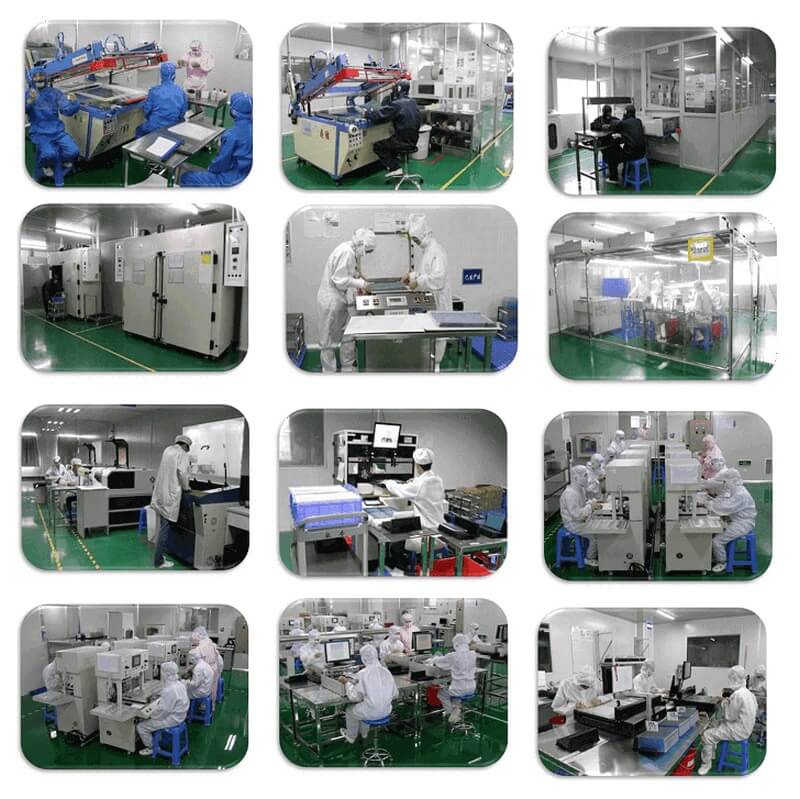

CATEGORIES
CONTACT US
Contact: Dingtouch
Phone: +8615815536116
Tel: +8615815536116
Email: sales@szdingtouch.com
Add: Building A, Bailu Plaza, No. 48, Gonghe Industrial Road, Gongle Community, Xixiang Street, Baoan District, Shenzhen,China. 518126
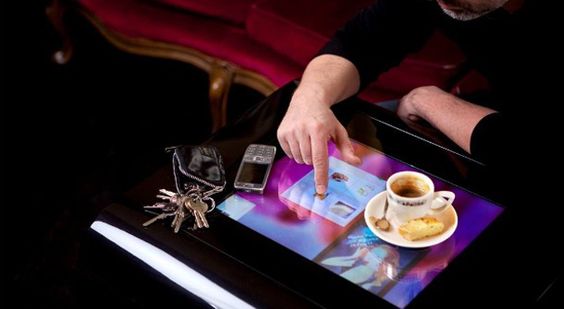

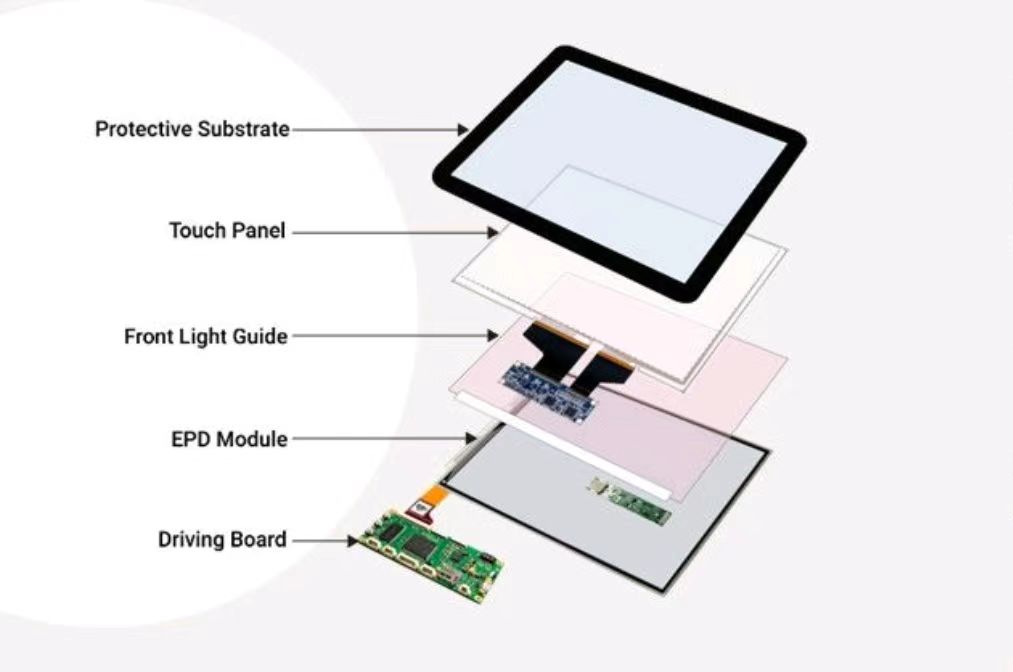
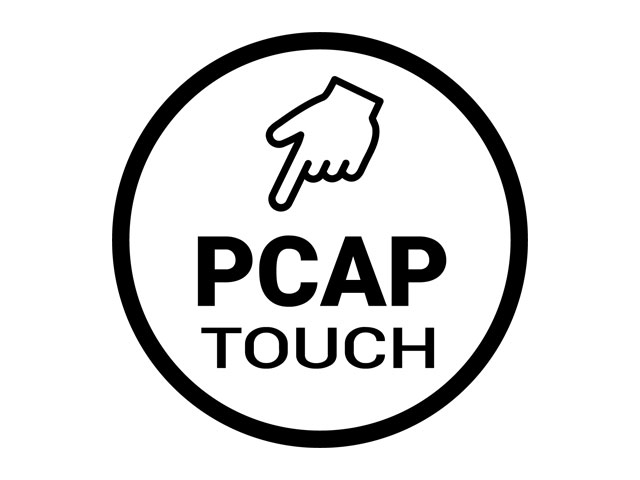

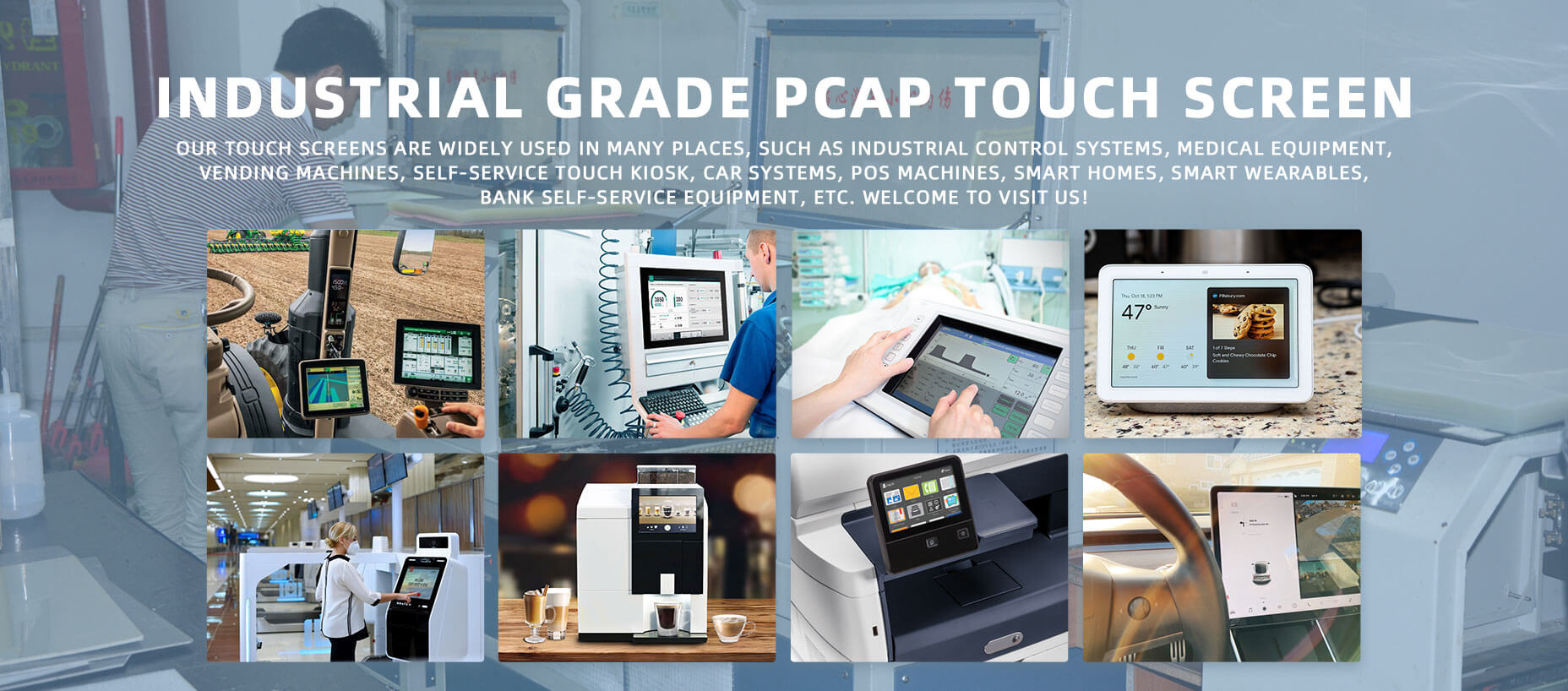
 Dingtouch
Dingtouch